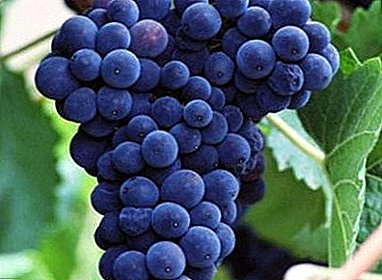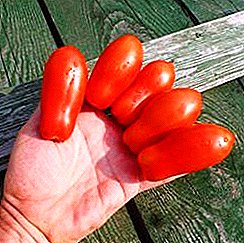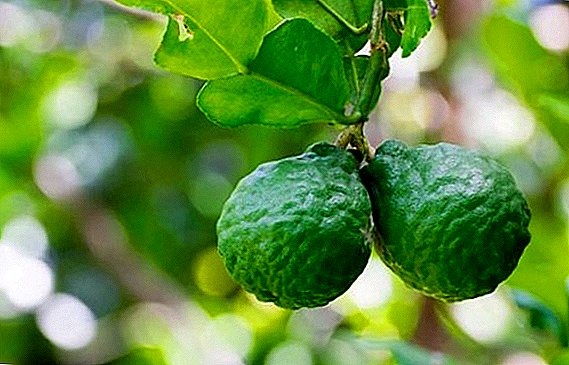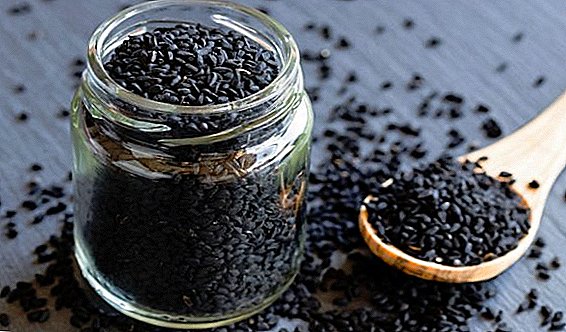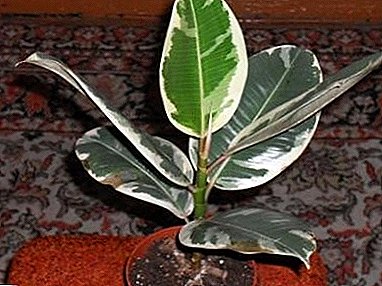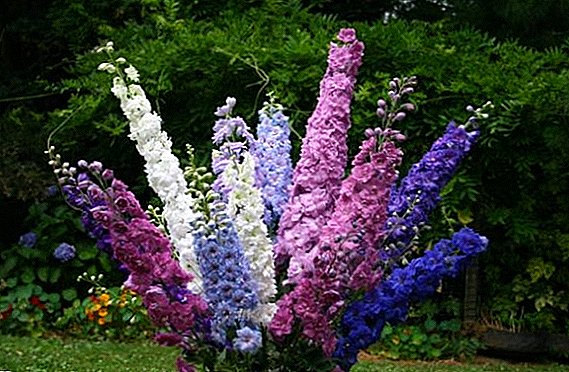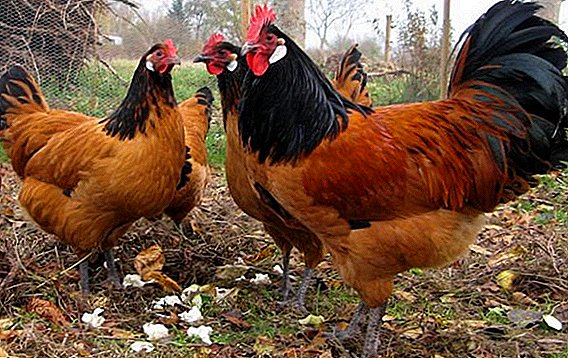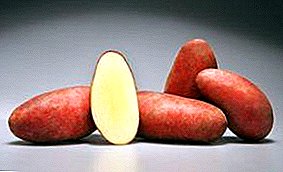 In modern poultry farming, highly productive hybrid breeds of both meat and egg orientation are widely used. One of the most productive of these hybrids are egg decal chicken. The features of this bird, its advantages and disadvantages will be discussed in this publication.
In modern poultry farming, highly productive hybrid breeds of both meat and egg orientation are widely used. One of the most productive of these hybrids are egg decal chicken. The features of this bird, its advantages and disadvantages will be discussed in this publication.
Breed breeding
This hybrid brought a famous American company Dekalb Poultry Research. In the register of FGBU "Gossortkomissiya" cross decalb white included in 2015. It is obtained from the crossing of roosters of DU 12 cross with DU 34 hens.  The selection work was aimed at obtaining hens with high egg production and carrying large eggs - this was perfectly possible for the breeders. In the promotional materials, the new breed was called nothing less than the "princess of the poultry industry."
The selection work was aimed at obtaining hens with high egg production and carrying large eggs - this was perfectly possible for the breeders. In the promotional materials, the new breed was called nothing less than the "princess of the poultry industry."
Did you know? In 2010, an amazing case was recorded - the young rooster independently changed the sex. This happened on one of the Italian farms. After the fox was ruined by a fox, the rooster was left alone and after a while began to lay eggs.
Description and Features
There are two lines of this breed: decalb white (white) and decalb brown (brown). Productivity and appearance (except for coloring) in both species are almost identical, but decalb white is widespread in our region much wider than brown rock.
Check out the crosses of the egg or universal direction: broken brown, highsex, master gray, hubbard, super hard, brown, rhodonite.
Appearance and physique
The appearance of these chickens is unremarkable:
- medium-sized, lean body;
- the backbone is light;
- breast bulged out;
- the hens have an abdomen;
- the neck is short and wide;
- small head with a strong yellow beak;
- scallop red, leaf-shaped, well developed, often hanging to the side even in hens, white lobes, red earrings;
- tarsus (unguided part of lower extremities without sole) short, yellow;
- feather color white or brown.

Character
The representatives of the decalba character non-aggressive, calm. They easily get along with other breeds, do not differ in aggression. May be contained in cages and in chicken coops with the possibility of free range.
Important! This breed does not tolerate a sharp change in habitat conditions, moving to a new place. Because of this, the hens may significantly decrease productivity, at least for a while.
Hatching instinct
This instinct in chickens decalb is very weak. For hatching decalb, incubators are usually used, or eggs are placed on the hen of other breeds of chickens. 
Performance Indicators
The decalb productivity figures are as follows:
- live rooster weight reaches 2.5 kg;
- live chicken weight - up to 1.7 kg;
- egg production an average of 330 eggs per year, but this figure can be significantly increased;
- egg weight an average of 60 grams;
- the color of the eggshell is white for the variety white and brown for brown;
- the chicken starts to age at the age of 4.5-5 months;
- maximum productivity is usually observed on the 40th week of bird life.
These chickens significantly reduce productivity during the molt period, which occurs at about 65 weeks of age. Throwed laying hens resume laying eggs in previous volumes. The most productive period of decalba lasts about two years from the beginning of egg-laying, after which the livestock is usually changed.
It is interesting to read about the benefits of chicken eggs and chicken egg production.
What to feed
For feeding birds of this breed (chickens and adult birds) are suitable feed used for feeding other egg chickens. 
Chickens
Freshly hatched chickens are fed with the yolk of a hard-boiled chicken egg, and low-fat cottage cheese is mixed into the yolk. From the fourth day of their existence, cereals (millet, yachting) and finely chopped greens are introduced into their diet. Then add grated vegetables, meat and bone meal and, if necessary, mineral or vitamin supplements.
Learn more about the maintenance and feeding of laying hens: how to make food at home, sprout wheat for chickens, what vitamins are needed for egg production.
Adult chickens
On the day of the chicken eats about 100 grams of feed. The best feed for adult chickens are animal feed intended for egg breeds. They are perfectly balanced, but relatively expensive. You can do with cheaper, self-prepared mixtures, which also provide high productivity of layers. For example, well proven a mixture of the following composition:
- corn - 40% of the total mass;
- wheat - 20%;
- barley - 7.5%;
- sunflower meal - 11.5%;
- yeast - 3%;
- fish meal - 5%;
- grass meal - 4%;
- chalk - 3%;
- shell - 4.5%
- salt - 0.5%;
- premix - 1%.
Important! For any type of feeding, greens (alfalfa, clover, nettle, etc.) should be added to the feed: freshly crumbled, in the form of grass meal or grass granules. In winter, greens can be replaced with hay.
Conditions of detention
The content of chickens is not difficult. They are kept both in cages and with the possibility of free range. Consider the necessary conditions for this bird in more detail. 
Coop Requirements
First of all, in the hen house there should be no drafts, besides, it needs to be warmed for a comfortable stay of chickens in the winter. The floor may be earthen rammed, wooden or concrete. In any case, the floor must be covered with a bed of straw, sawdust or peat.
In the hen-house, perches are as high as 50 cm in height, nests (at least one for 6 layers is recommended), a feeding trough, a trough, a ventilation system and lighting, and, if necessary, also heating.
Recommended poultry housing standards - no more than 5 adult chickens per square meter.
The optimal temperature in the hen house is +23 ° С… +25 ° С. Humidity - no higher than 75%. The litter should not be wet, it should be changed to fresh and dry as needed. A complete cleaning of the chicken coop with disinfection is carried out when changing livestock, but at least once a year. Mold in the chicken coop is not allowed. If chickens appear sick, the chicken coop is disinfected both during the outbreak of the disease and after it has ended.
Walking yard
Courtyard for walking, as a rule, arrange near the hen house. Most often it is a plot enclosed by a net, but portable corrals are also used. The size of the site usually depends on the size of the yard - it can be from a couple of square meters to a spacious fenced area. The height of the fence - at least two meters. However, the courtyard is often covered from above with a net or roof (this cover also serves as protection against birds of prey), in which case the fence may be lower.  In the courtyard, you definitely need to arrange a water bowl and a feeder. The shelter from the sun and rain is also desirable. If the paddock is not adjacent to the chicken coop, in which the bird can hide from the vagaries of the weather, then such a shed is required.
In the courtyard, you definitely need to arrange a water bowl and a feeder. The shelter from the sun and rain is also desirable. If the paddock is not adjacent to the chicken coop, in which the bird can hide from the vagaries of the weather, then such a shed is required.
Check out the do-it-yourself chicken pen guidelines.
How to endure winter cold
In winter, it is advisable that the temperature in the chicken coop does not fall below. +10 ° C - at this temperature, egg production is almost not reduced. But chickens can live at a lower temperature. If the chicken coop is insulated and densely populated, then the birds themselves can provide an acceptable temperature in it, moreover, incandescent lamps serve as an additional source of heat. If the climate is too cold, a heating system may be required.
Did you know? The first tamed chickens had a very low productivity: a live weight of no more than 1 kg, egg production according to modern concepts is extremely low, literally several eggs a year. Therefore, they were not tamed for meat and eggs, but for use in cockfighting.
Advantages and disadvantages of the breed
Of advantages Decalbov can be noted the following:
- excellent egg production with moderate feed intake;
- large eggs;
- early entry into productive age;
- calm character;
- lack of care and conditions of detention;
- the possibility of content in the cells.
 This breed is not without some deficiencies, namely:
This breed is not without some deficiencies, namely:
- high productivity lasts no more than two years;
- there is practically no instinct for incubation;
- in severe winters, heating of the chicken coop may be required.
Video: cross decalb white
Breed dekalb is one of the best representatives of hybrids of an egg orientation. Excellent productivity is combined in it with undemanding to the conditions of detention. Due to these qualities, these chickens are becoming increasingly popular among poultry farmers.



